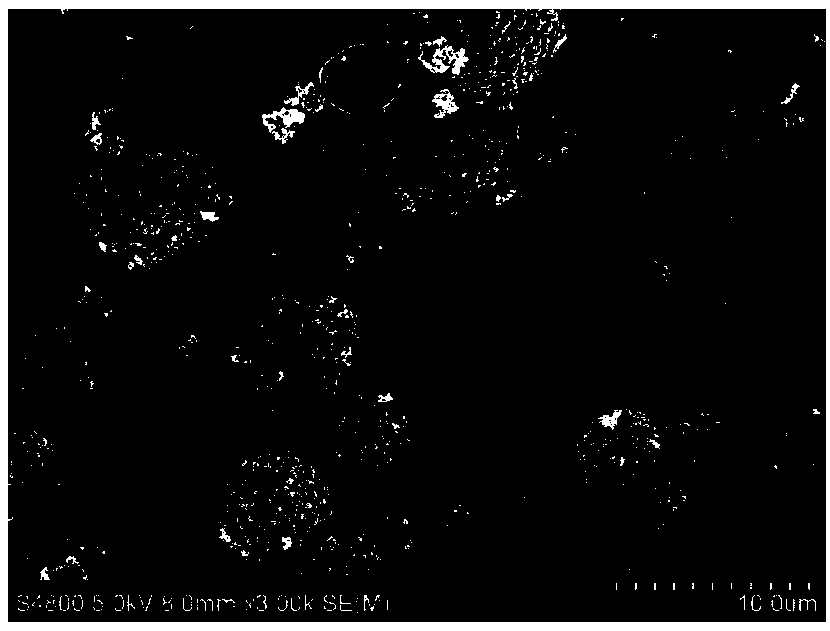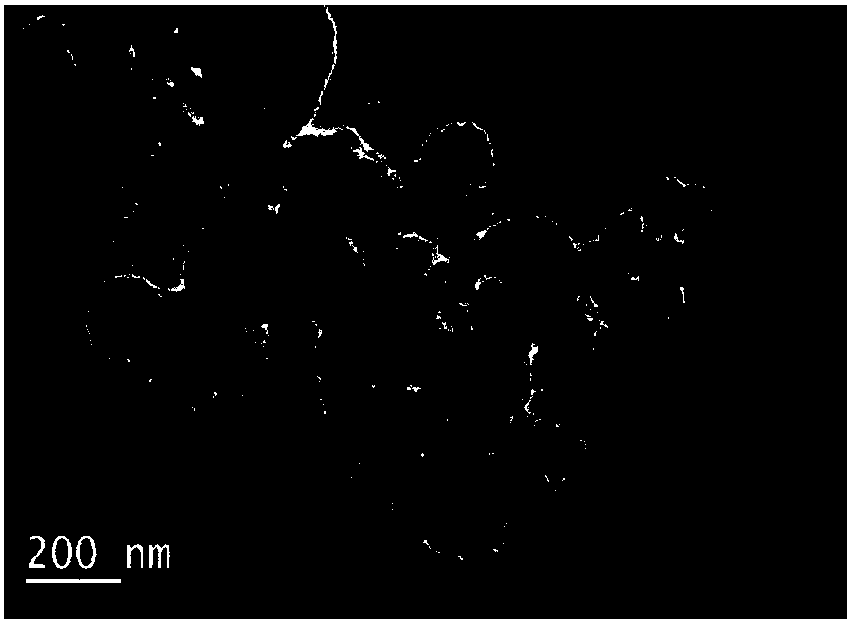Ultramicroporous carbon material and preparation method thereof
A technology of microporous carbon and carbon materials, applied in chemical instruments and methods, carbon compounds, inorganic chemistry, etc., can solve problems such as equipment corrosion, environmental pollution, and insufficient pore structure development.
- Summary
- Abstract
- Description
- Claims
- Application Information
AI Technical Summary
Problems solved by technology
Method used
Image
Examples
preparation example Construction
[0026] The invention provides a method for preparing a very microporous carbon material, comprising the following steps:
[0027] (1) After mixing monosaccharides, unsaturated organic acids and water, perform a hydrothermal reaction to obtain a hydrothermal carbon material;
[0028] (2) performing a replacement reaction after mixing the hydrothermal carbon material obtained in the step (1) with alkali metal hydroxide and water to obtain a replacement carbon material;
[0029] (3) Activating the substituted carbon material obtained in the step (2) to obtain a very microporous carbon material.
[0030] The invention mixes monosaccharides, unsaturated organic acids and water and then performs hydrothermal reaction to obtain hydrothermal carbon materials. In the present invention, the monosaccharide preferably includes one or more of glucose, fructose, galactose, ribose and deoxyribose. In the present invention, the source of the monosaccharide is not particularly limited, and c...
Embodiment 1
[0049] Add 6g of glucose to 60mL of aqueous solution, stir until clear liquid, add 0.06g (1% of the mass of glucose) of acrylic acid and stir evenly, put polytetrafluoroethylene in the reaction kettle, hydrothermally treat at 200°C for 12h, and finally obtain The solution was filtered, washed, and then dried at 80° C. for 10 h to obtain a hydrothermal carbon material.
[0050] Prepare KOH into 30 mL of an aqueous solution with a concentration of 0.03 mol / L, add the above hydrothermal carbon material, then stir in a 70°C water bath for 10 hours, centrifuge until the washing liquid is neutral, and then dry the solid in an oven at 80°C .
[0051] Afterwards, the solid was activated in a tubular resistance furnace, heated to 600°C under a nitrogen atmosphere, and kept at a constant temperature for 8 hours. Finally, the obtained sample was stirred in 10% dilute hydrochloric acid for 1 hour, and dried to obtain the AcA1 sample.
Embodiment 2
[0053] Add 6g of glucose to 60mL of aqueous solution, stir until clear liquid, add 0.12g (2% of the mass of glucose) of acrylic acid and stir evenly, put polytetrafluoroethylene in the reaction kettle, hydrothermally treat at 180°C for 16h, and finally obtain The solution was filtered, washed, and then dried at 80° C. for 10 h to obtain a hydrothermal carbon material.
[0054] Prepare KOH into 30 mL of an aqueous solution with a concentration of 0.06 mol / L, add the above-mentioned hydrothermal carbon material, then stir in a water bath at 80°C for 8 hours, centrifuge until the washing liquid is neutral, and then dry the solid in an oven at 80°C .
[0055] Afterwards, the solid was activated in a tube-type resistance furnace, heated to 700°C under a nitrogen atmosphere, and kept at a constant temperature for 6 hours. Finally, the obtained sample was placed in 10% dilute hydrochloric acid and stirred for 1 hour, then dried to obtain the AcA2 sample.
PUM
| Property | Measurement | Unit |
|---|---|---|
| Aperture | aaaaa | aaaaa |
Abstract
Description
Claims
Application Information
 Login to View More
Login to View More - R&D Engineer
- R&D Manager
- IP Professional
- Industry Leading Data Capabilities
- Powerful AI technology
- Patent DNA Extraction
Browse by: Latest US Patents, China's latest patents, Technical Efficacy Thesaurus, Application Domain, Technology Topic, Popular Technical Reports.
© 2024 PatSnap. All rights reserved.Legal|Privacy policy|Modern Slavery Act Transparency Statement|Sitemap|About US| Contact US: help@patsnap.com










